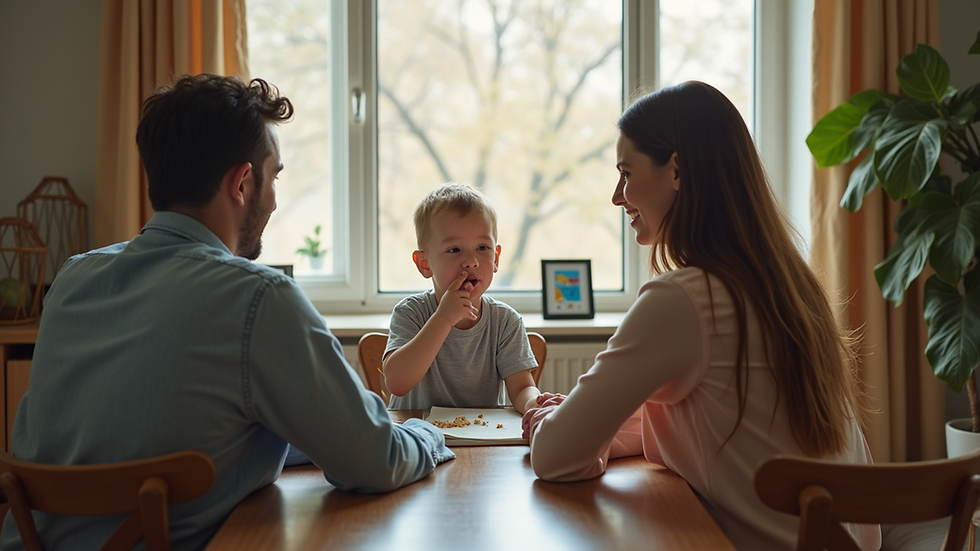Supervised Visits: Guidelines for Positive Parent-Child Interactions
- Evan Swanson

- Aug 7, 2025
- 4 min read
Navigating the world of supervised visits can be challenging for both parents and children. These visits are often necessary to ensure that children maintain a relationship with their non-custodial parent in a safe environment. However, the experience can be stressful and emotional. This blog post aims to provide practical guidelines for creating positive interactions during supervised visits.
Understanding the dynamics of these visits is crucial. They are not just about spending time together; they are about building trust, fostering connections, and ensuring the child's well-being. With the right approach, supervised visits can be a rewarding experience for everyone involved.
Understanding Supervised Visits
Supervised visits are arranged when a child’s safety is a concern. They allow a non-custodial parent to spend time with their child under the watchful eye of a third party. This third party can be a family member, a friend, or a professional supervisor.
The primary goal of these visits is to ensure that the child feels safe and secure while maintaining a relationship with both parents. It is essential to create an environment where the child can express themselves freely and enjoy their time with the non-custodial parent.
Preparing for the Visit
Preparation is key to a successful supervised visit. Here are some steps to consider:
Set Clear Expectations: Before the visit, discuss what will happen. Explain the rules and the role of the supervisor. This helps everyone understand their responsibilities.
Choose the Right Location: Select a comfortable and neutral place for the visit. Parks, community centers, or family-friendly cafes can be great options.
Plan Activities: Having activities planned can help ease any tension. Consider games, crafts, or outdoor activities that both the parent and child can enjoy together.
Communicate Openly: Encourage open communication between the parent and child. This can help build trust and make the visit more enjoyable.
Stay Calm: Emotions can run high during these visits. It is important for the parent to remain calm and composed. This sets a positive tone for the visit.
Creating a Positive Atmosphere
The atmosphere during a supervised visit can greatly impact the experience. Here are some tips to create a positive environment:
Be Present: The parent should focus on the child during the visit. Put away distractions like phones and engage fully in the moment.
Encourage Play: Play is a natural way for children to express themselves. Encourage activities that allow for fun and laughter.
Be Supportive: Offer praise and encouragement. This helps the child feel valued and loved.
Respect Boundaries: Understand that the child may have mixed feelings. Respect their emotions and give them space if needed.
Stay Positive: Keep the conversation light and positive. Avoid discussing any negative topics or conflicts.
Handling Difficult Situations
Sometimes, things may not go as planned during a visit. Here are some strategies for handling difficult situations:
Stay Calm: If the child becomes upset, it is important for the parent to remain calm. Take deep breaths and try to soothe the child.
Acknowledge Feelings: Let the child know that it is okay to feel upset. Acknowledging their feelings can help them feel understood.
Redirect Attention: If a situation escalates, try to redirect the child’s attention to a different activity. This can help diffuse tension.
Take Breaks: If emotions are running high, it may be helpful to take a short break. Step outside or take a moment to breathe.
Seek Support: If issues persist, consider discussing them with the supervisor. They can provide guidance and support.
The Role of the Supervisor
The supervisor plays a crucial role in ensuring that the visit goes smoothly. Here are some responsibilities of the supervisor:
Monitor Interactions: The supervisor should observe the interactions between the parent and child. This helps ensure that the child feels safe.
Facilitate Communication: If necessary, the supervisor can help facilitate communication between the parent and child.
Provide Feedback: After the visit, the supervisor can offer feedback on what went well and what could be improved.
Remain Neutral: It is important for the supervisor to remain neutral and not take sides. Their role is to support the child and ensure a positive experience.
Building a Stronger Relationship
Supervised visits are an opportunity to build a stronger relationship between the parent and child. Here are some ways to strengthen that bond:
Consistency is Key: Regular visits help establish a routine. This consistency can help the child feel more secure.
Share Experiences: Encourage the parent to share stories and experiences. This helps the child feel connected to their parent’s life.
Create Memories: Take photos or keep a journal of the visits. This can help the child remember the positive experiences they shared.
Celebrate Achievements: Acknowledge milestones and achievements, no matter how small. This reinforces the bond between parent and child.
Stay Engaged: After the visit, the parent can stay engaged by sending messages or small gifts. This shows the child that they are always in their parent’s thoughts.
Conclusion: Embracing the Journey
Supervised visits can be a challenging yet rewarding experience. By following these guidelines, parents can create a positive environment that fosters healthy interactions with their children.
Every visit is a step towards building a stronger relationship. Embrace the journey, and remember that the goal is to create lasting memories and connections. With patience, understanding, and love, supervised visits can become a meaningful part of a child's life.






Comments